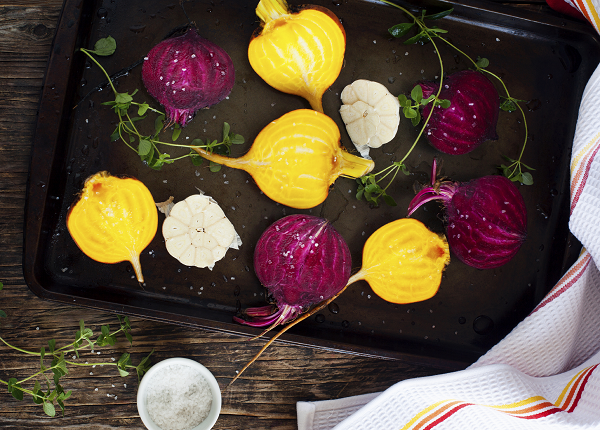 As we continue planning for this year’s marketing content, we have to take into consideration which food trends will open up opportunities for the fresh produce industry to connect with our audiences. For example, what will be the next kale? Do people want more sweet or savory options? We asked some of the food industry leaders what trends they’re seeing and where there are opportunities for 2016 content, and we got some valuable insights as a result.
As we continue planning for this year’s marketing content, we have to take into consideration which food trends will open up opportunities for the fresh produce industry to connect with our audiences. For example, what will be the next kale? Do people want more sweet or savory options? We asked some of the food industry leaders what trends they’re seeing and where there are opportunities for 2016 content, and we got some valuable insights as a result.
Celebrity chef and author of The Broad Fork, Hugh Acheson (@HughAcheson) wants us to watch for an increase in obscure grains like farro, millet, wheat berries, and quinoa, as they’ve continued to grow in popularity as main dish staples. He also sees a huge opportunity for European-centric greens like treviso, frisee, and escarole and believes that sweet potato greens will become the new spinach. Need a reason to pickle? Chef Hugh says that fermenting isn’t going anywhere – in fact, pickling is going to be big business in 2016.
Registered Dietician and TV Personality, Carissa Bealert (@CarissaAnneB), says that she’s seeing a trend in utilizing spices that heal, including turmeric, cayenne, and cinnamon. Turmeric and cayenne contain powerful antioxidants and act as anti-inflammatories. Spicy foods like cayenne are also gaining note as a metabolism booster and cinnamon has antioxidant properties and has shown to help insulin work better to maintain stable blood sugar levels. Carissa predicts that people are likely to step away from chemical-based medications and begin relying more and more on foods to prevent disease and fuel recovery.
Registered Dietician and Food Director at Family Circle magazine, Regina Ragone (@ReginaRagone), sees a consistent increase in experimentation with different types of vegetables. She predicts that root vegetables like beets, radishes, and rutabaga will continue to grow in popularity, while colorful varieties of traditional vegetables like carrots and cauliflower will take a prominent role on the plate. Regina also predicts that Brussel sprouts will continue to make a major comeback, as consumers are becoming much more comfortable cooking them.
Food Director at Health magazine and author of You Made That Dessert?, Beth Lipton (@CookiePie0402), notes that kit services are continually growing in popularity. She continues to receive pitches about new food kits that appeal specifically to different diets and eating preferences like Paleo and Vegan, and sees an opportunity for produce brands to get involved with these companies. She also predicts that dark chocolates (80% and higher) will gain popularity as a health food, when mixed with other super foods.
Blogger at Gimme Some Oven, Ali Ebright (@GimmeSomeOven), notes that her fans are increasingly interested in using cauliflower as a healthy substitute in creamy recipes. She also sees bitter greens gaining popularity with the acceptance of kale, and expects that beet leaves, chicory and collard greens will take a front seat at the greens table.
Trends we are seeing on the rise through our various media connections:
- An increase in sweet and spicy recipes using Sriracha and habanero peppers – especially combined with jams and honey.
- Gut health as a major dietary consideration – kombucha, labneh, kefir, and other fermented food options will continue to increase in awareness.
- Herbs and edible flowers are becoming more popular in restaurants and with consumers in their own homes.
- Overwhelmingly, we continue to see that people want REAL FOOD. It’s a great time to be in the fresh produce industry because shoppers are reading food labels more than ever before. There is a growing appreciation for foods that are natural, minimally processed, and good for your body.
When creating this year’s recipes, promotions, and other content for the brand, consider these food trends and how to incorporate your products in a way that is relevant and speaks to an evolving group of consumer taste buds.











